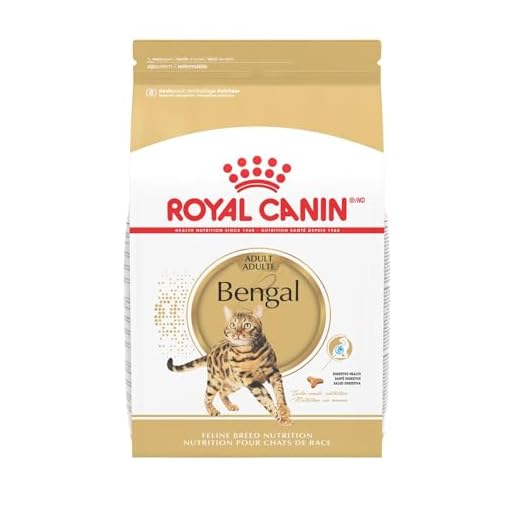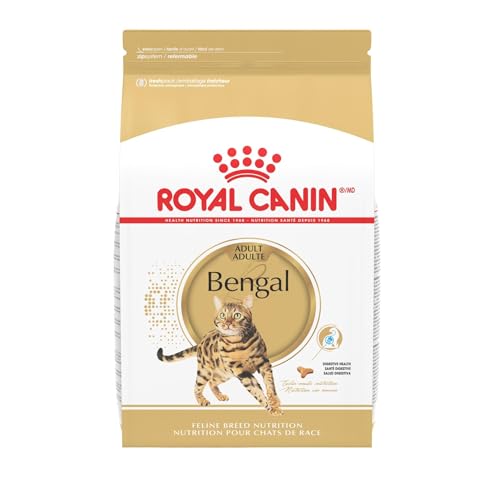



For those curious about a breed that bears a striking resemblance to the wild spotted big cats, I highly recommend checking out the Bengal. With its distinctive rosette patterns and sleek physique, this breed offers a captivating blend of domestic charm and exotic allure.
These playful companions not only impress with their looks but also boast an energetic personality. Bengals thrive on interaction and play, making them a perfect match for active households. Their intelligence is remarkable; engaging them with puzzle toys can keep them entertained and mentally stimulated.
When considering bringing one into your home, ensure you provide plenty of space to roam and explore. A secure outdoor environment or a catio can satisfy their adventurous spirit while keeping them safe. Grooming is relatively simple, as their short coat requires minimal maintenance, allowing you to spend more time enjoying their lively antics.
Appearance Similarities with a Big Cat
For those who admire the striking aesthetics of larger felines, I recommend considering the Bengal breed. This breed showcases a wild appearance reminiscent of a certain spotted big cat. With its distinctive rosettes and marbled patterns, Bengals have a coat that mirrors the exotic look of their wild relatives.
Another option is the Ocicat, which, despite its name, does not contain any wild ancestry. The Ocicat’s spotted coat gives off a similar vibe, making it an appealing choice for those who want a pet with a touch of the wild.
The Savannah is also an intriguing choice. This breed combines domesticity with the allure of exotic looks, featuring large ears and tall legs. Its coat pattern can exhibit spots and stripes akin to those found on larger felines.
Each of these breeds offers unique characteristics and temperaments, so it’s essential to research their specific needs and behaviors. Find a companion that suits your lifestyle while satisfying your desire for that wild appearance!
Identifying the Bengal Cat’s Leopard-like Features
The Bengal’s striking coat pattern is its most notable trait, resembling the wild feline. The rosettes and spots can vary significantly, with some showcasing a marbled effect. This unique fur often has a shimmering quality due to the presence of a gene that produces a glittering appearance, making them look even more exotic.
| Feature | Description |
|---|---|
| Coat Pattern | Distinct rosettes and spots, akin to those of a wild leopard. |
| Coloration | Ranges from golden to silver, with variations in spot colors enhancing their resemblance to wild cats. |
| Body Structure | Muscular and agile, similar to a small leopard, showcasing strength and grace. |
| Eye Shape | Almond-shaped eyes that can be green or gold, giving them an intense, wild look. |
The shape of their body further contributes to their wild appearance. With a strong, athletic build, these creatures exhibit agility and speed, reminiscent of their larger relatives. Their playful nature and intelligence often lead to behaviors that mimic those of a small predator.
In addition to physical traits, their playful antics can be quite entertaining. Observing them can be comparable to watching a small wild animal in action. For those interested in culinary adventures, you might also want to check out this great resource on how to cook pork belly in cast iron skillet.
Comparing Temperament: Bengal vs. Leopard
When it comes to temperament, Bengals are known for their playful and energetic nature. They thrive on interaction and require mental stimulation, making them excellent companions for active households. Their curiosity often leads them to explore every corner of their environment, and they enjoy engaging in games that challenge their intelligence.
In contrast, leopards exhibit a more solitary and cautious demeanor. They are not social animals like Bengals and prefer to maintain their distance from others, including humans. This independence is a key characteristic of their behavior, allowing them to adapt well to various habitats without the need for social interaction.
Playfulness vs. Independence
Bengals often exhibit a dog-like quality, following their owners around and seeking attention, while leopards display a more reserved attitude. The Bengal’s playful antics can be a delight, but those looking for a more relaxed companion might appreciate the self-sufficiency of a leopard. Understanding these differences is crucial for potential pet owners to find the right fit for their lifestyle.
Training and Interaction
Training Bengals is typically easier due to their eagerness to please and learn. They respond well to commands and can perform tricks, which adds to their charm. Leopards, however, are not trainable in the same sense; their wild instincts prevail, and they thrive on their own terms. If you’re considering a Bengal, ensure you provide ample enrichment and social opportunities. Also, if your feline friend has health concerns, check out the best foods for cats with kidney disease for dietary recommendations.
Understanding the Genetics Behind Leopard Spots
Spots on felines, resembling those of a wild counterpart, arise from intricate genetic mechanisms. The primary gene at play is the Agouti gene, which controls pigmentation in fur. Variations in this gene can lead to distinct patterns, such as the rosettes seen in my Bengal friends. This gene’s expression influences whether a feline showcases a solid coat or a more complex spotted pattern.
Another significant contributor is the Tabby gene. It dictates the classic tabby patterns, including the mackerel, blotched, or spotted types. In Bengals, this gene combines with the Agouti gene, resulting in unique spot formations that mimic wild leopards.
Key Genetic Influences
Understanding coat patterns also involves the role of other genes, such as the Extension gene, which affects the distribution of pigment in the fur. This can enhance the brightness of spots, making them more pronounced. Moreover, the interaction between these genes can lead to a variety of coat types, from subtle flecks to bold spots, contributing to the overall appearance.
Breeders often select for these traits, combining different gene pools to produce offspring that exhibit desirable characteristics. This selective breeding helps maintain the striking visuals that many admire in Bengals, while also highlighting the importance of genetic diversity.
Tips for Caring for a Bengal Feline at Home
Regular, interactive playtime is a must. Utilize feather wands, laser pointers, and puzzle toys to keep my energetic spirit stimulated. Aim for at least 30 minutes daily to ensure I stay active and entertained.
Provide a diverse diet tailored to my nutritional needs. High-quality protein sources are essential, along with the right balance of fats and carbohydrates. Consult a veterinarian for specific recommendations based on my age and activity level.
Create a climbing paradise. Tall cat trees and shelves allow me to explore vertically, replicating the natural habitats of my wild ancestors. Ensure sturdy structures can support my adventurous nature.
Maintain a clean litter box. Scoop daily and change the litter weekly to prevent odors and encourage me to use it willingly. A pristine environment is key to my comfort and health.
Regular grooming helps maintain my stunning coat. Brush me at least once a week to minimize shedding and matting. This also provides bonding time and keeps my fur looking its best.
Socialization is essential. Spend quality time with me, and consider introducing me to new people and pets gradually. This aids in developing a well-adjusted personality and reduces anxiety.
Provide mental enrichment through toys and activities that challenge my intellect. Rotate toys regularly to keep my interest piqued and stimulate my natural hunting instincts.
Regular veterinary check-ups are non-negotiable. Schedule annual visits to monitor my health and receive vaccinations. Early detection of potential issues ensures I stay in peak condition.
Ensure a safe environment. Remove hazardous items and secure windows and balconies to prevent accidents. A safe space allows me to explore without worry.
Exploring the History of Bengal Cats and Their Wild Ancestors
Understanding the origins of Bengal breeds reveals their captivating lineage. This breed traces back to the crossbreeding of the Asian leopard feline and domestic varieties, resulting in a striking appearance and dynamic personality.
Key historical points include:
- The initial breeding efforts began in the 1960s, aiming to create a hybrid with the wild cat’s unique patterns.
- Jean Sugden Mill, a pioneer in this endeavor, played a crucial role in developing the Bengal through careful selection.
- Recognition by cat fancier organizations occurred in the 1980s, leading to increased popularity among enthusiasts.
This fascinating background emphasizes the blend of wild and tame characteristics, contributing to the breed’s allure. The distinct markings and energetic nature stem from their ancestors, giving them a unique charm that captivates many.
To appreciate the heritage further, consider these features:
- Spotted or marbled coat patterns that resemble the wild feline.
- A robust and athletic physique, showcasing agility and strength.
- An inquisitive and playful temperament, reflecting their lively ancestors.
Incorporating knowledge of their lineage enhances the experience of sharing a home with these remarkable companions. Understanding their wild ancestry allows for a deeper connection and appreciation for their unique traits.








